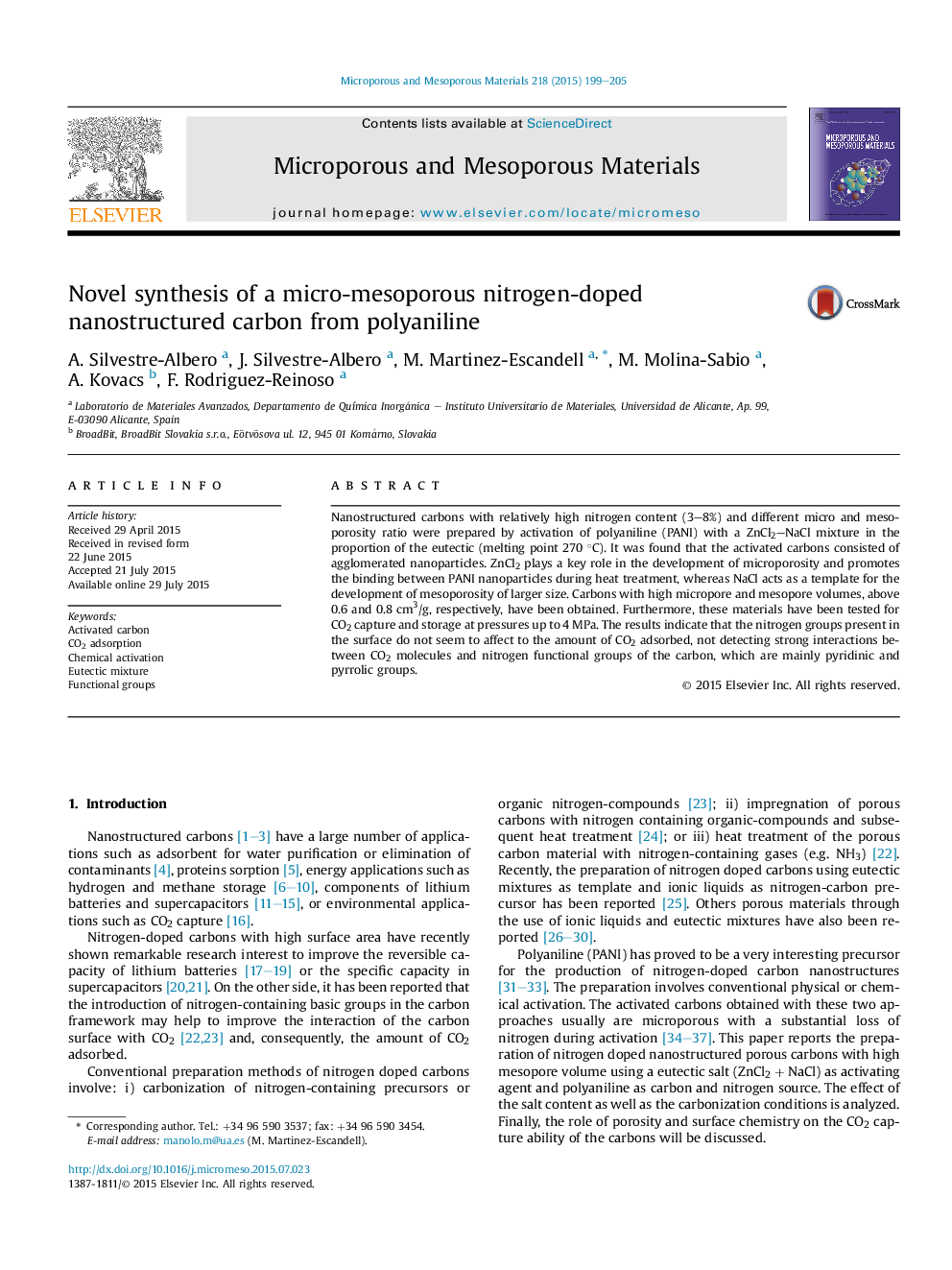| Article ID | Journal | Published Year | Pages | File Type |
|---|---|---|---|---|
| 72445 | Microporous and Mesoporous Materials | 2015 | 7 Pages |
•Activation of PANI with ZnCl2 produce micropores.•Activation of PANI with NaCl–ZnCl2 mixture produce micro and mesopores.•The presence of NaCl has a role in the creation of mesopores, acting as a template.•Overlapping of N2 and CO2 isotherms for carbons with different N content was found.•The nitrogen groups in the surface of these carbons do not affect CO2 adsorption.
Nanostructured carbons with relatively high nitrogen content (3–8%) and different micro and mesoporosity ratio were prepared by activation of polyaniline (PANI) with a ZnCl2–NaCl mixture in the proportion of the eutectic (melting point 270 °C). It was found that the activated carbons consisted of agglomerated nanoparticles. ZnCl2 plays a key role in the development of microporosity and promotes the binding between PANI nanoparticles during heat treatment, whereas NaCl acts as a template for the development of mesoporosity of larger size. Carbons with high micropore and mesopore volumes, above 0.6 and 0.8 cm3/g, respectively, have been obtained. Furthermore, these materials have been tested for CO2 capture and storage at pressures up to 4 MPa. The results indicate that the nitrogen groups present in the surface do not seem to affect to the amount of CO2 adsorbed, not detecting strong interactions between CO2 molecules and nitrogen functional groups of the carbon, which are mainly pyridinic and pyrrolic groups.
Graphical abstractFigure optionsDownload full-size imageDownload as PowerPoint slide
